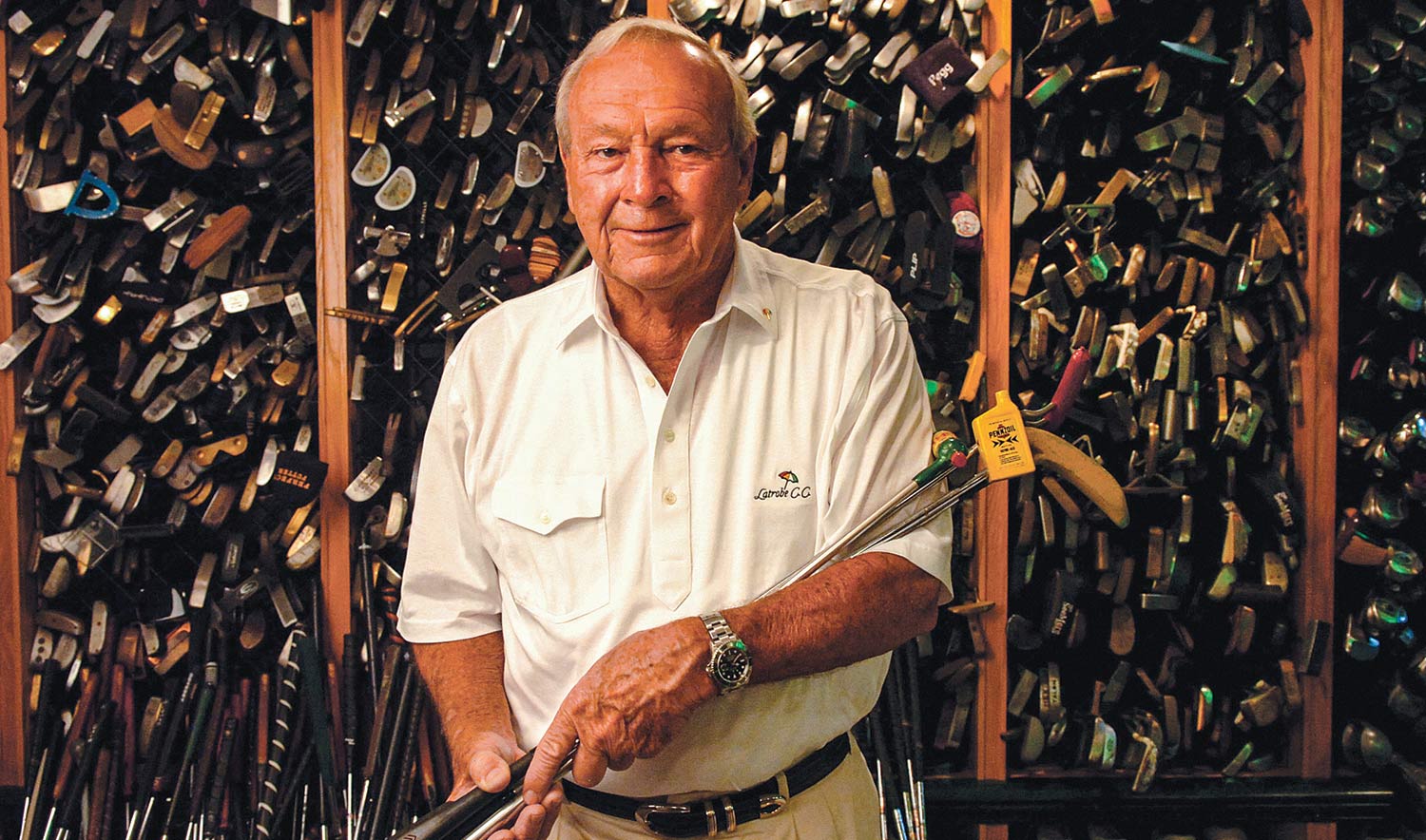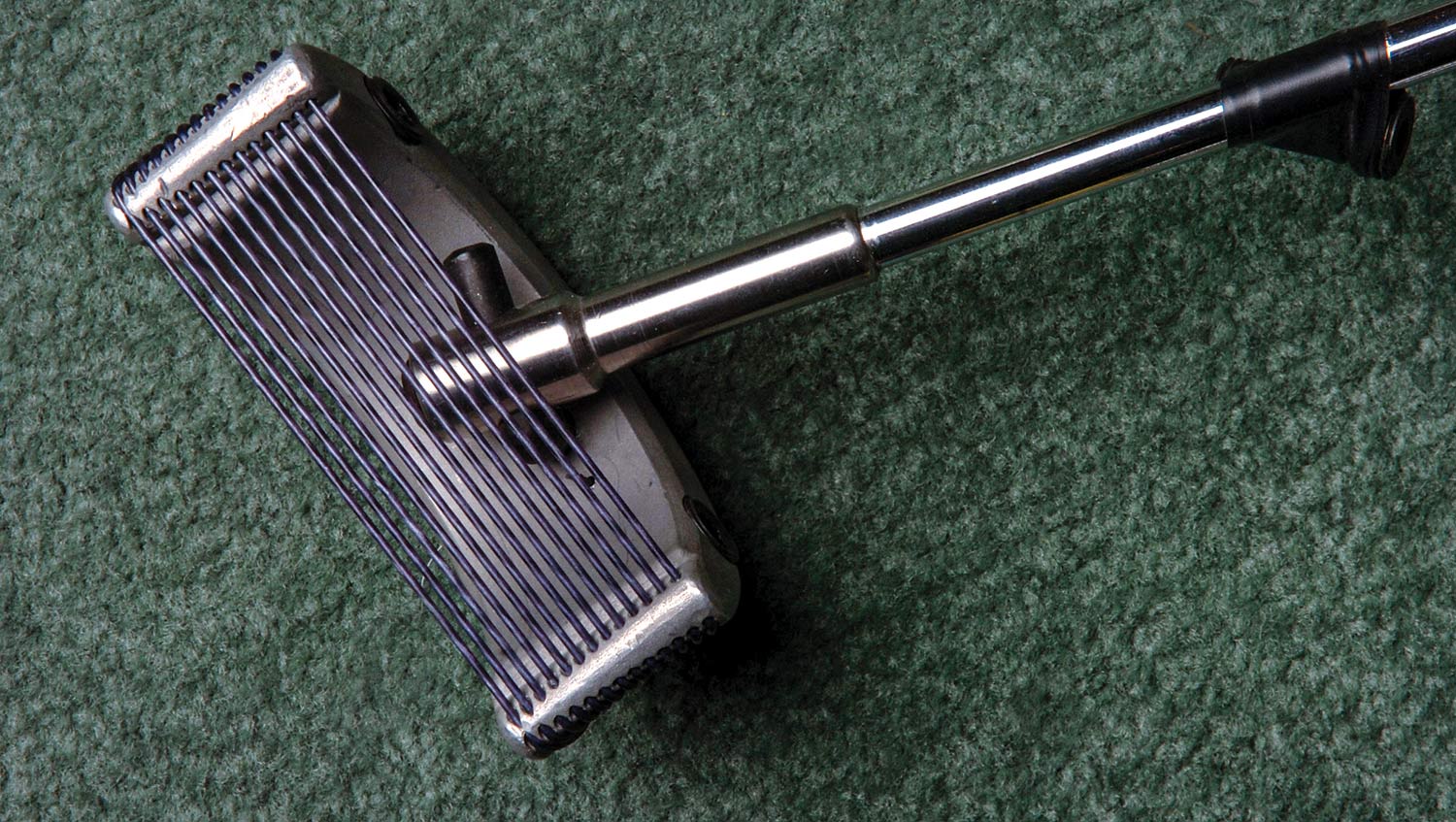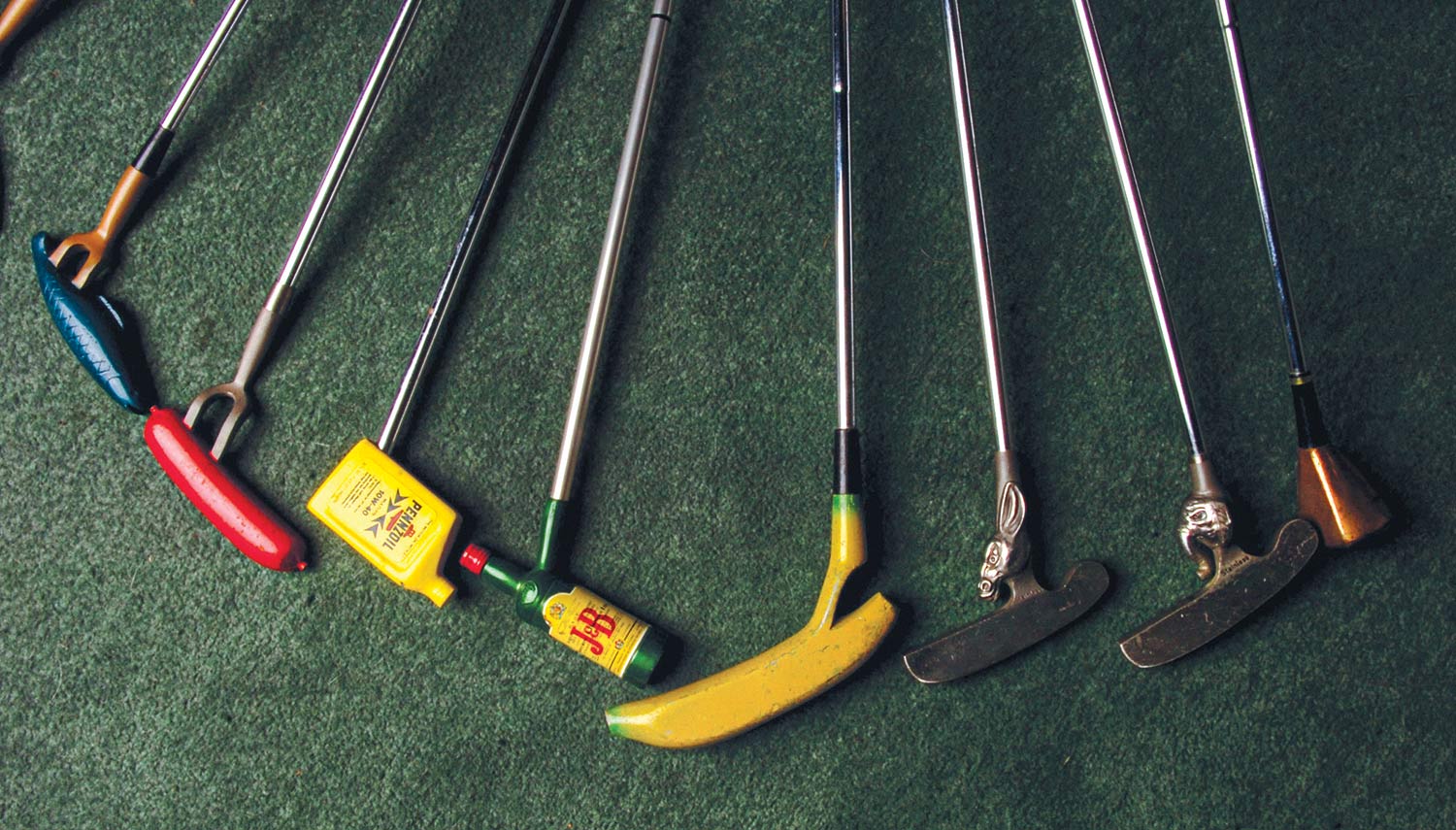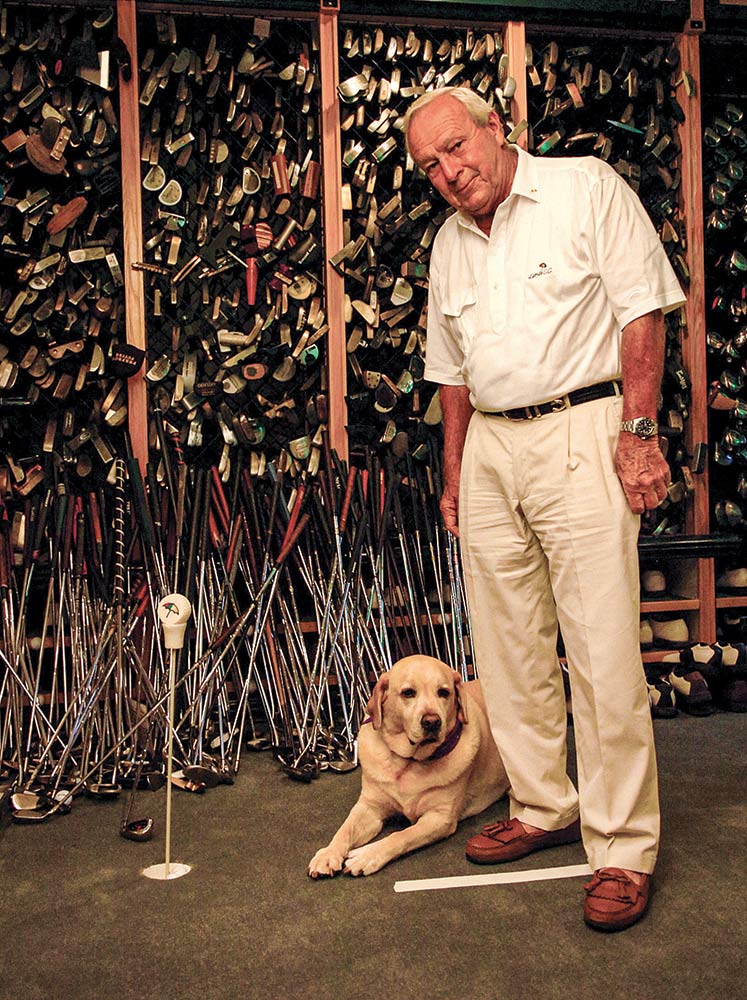
hrough a lifetime of searching, of trial and error, of hot form and cold, of hopes dashed and renewed, there were many times Arnold Palmer thought he had found the ideal putter—it just needed a little grinding, maybe a new grip. Tour golfers have often tinkered with putters and looking back, Palmer was never slow to tighten his workshop vice around the neck of a new flat-faced stick
Arnold Palmer always showed an unshakeable loyalty to family, friends and fans but never was there a putter that earned Palmer’s unflinching devotion. Rarely did a putter enter Palmer’s goodly grip that the great champ didn’t think he could improve, one way or another.
Mark McCormack, the man who pioneered the industry of athlete management with his work for Palmer, once declared: “If a wizard gave Arnold Palmer a divining rod that would point to gold in the ground, Arnold would take it home and start whittling it to point to diamonds too!”
In the latter years of Palmer’s life the obsession may have eased, but don’t let that fool you into thinking Palmer was anything short of whole-heartedly consumed with trying to improve his putting performance and work out how to extend a hot streak on the greens from one round to the next. Palmer devoted countless hours on the practice green with his hands wrapped around the leathered grip of a simple putter. Countless.

“It’s impossible to overestimate the importance of being a good putter in order to be a successful golfer,” Palmer told Kingdom magazine in a 2007 interview. “I used to think there was an actual formula for great putting and that if I could discover the key to that formula, I would become the greatest putter in the history of golf. It’s a formula I’m still seeking.”
At the time Palmer was seeking it with a first generation Callaway 2-Ball White Hot Mallet, 34-inch shaft, with an out-of-production Lamkin Leather paddle grip. “It’s got great feel and gives a true roll every time,” he said. “Best putter I’ve ever had.”
Maybe, but Palmer’s best putting years were when he wielded the classic blades he used to win most of his 92 professional victories, which had not altered much from the ones golfers had been using for the past century.
Palmer’s Latrobe workshop was full of bags of cast-off clubs, tubs overflowing with shredded leather grips, pairs of spikes, and walls casually decorated with the kind of sports memorabilia that would spark the envy of every sports bar.

But it’s the wall of putters, more than 2,000 of them, that illustrates in one glance just how much time Palmer has spent over his career trying to uncover putting nirvana. They are stored in a fashion that other connoisseurs might use to store fine wines. Some he might only have used once or twice, others are vintage and rusty and look like they could have been lifted straight from the bag of Old Tom Morris, while there are also the Wilson-manufactured “Arnold Palmers” that ruled the greens of Augusta National for a heady spell.
Those Wilson originals, cast right in amidst the makeshift contraptions sent by earnest admirers, are among the most valuable to club collectors. Rare and significant Arnold Palmers produced from 1955 through 1963 have fetched thousands from eager aficionados.

Then there’s the odd assortment of fat ones, skinny ones and weapons that look like they could hammer rocks. There’s one with a frieze of a multi-propeller airplane facing away from the ball. One inventor sent Palmer a peanut putter. There is a lime green contraption that looks more like a crude metal detector. One has a disconcerting head that’s no bigger than the ball itself. One of them looks like a mini-manhole cover sawed in half and welded to a shaft. One of the most unusual putters is an adjustable, banjo number (with a tiny wrench included) with a 12-string face that melodically boings the golf ball.
Ray Floyd took some heat when he started playing with an unconventional Zebra camber-sole Ram Putter at the 1976 Masters. The purists howled, until he won. Then a flood of imitators swamped the market.

That’s why none of the putters sent to Palmer over the years were dismissed out of hand. “I’ve given them all a try,” he said. “Great putting is half technique and half mental. The best putting I ever did in my career was when I had a guy standing right beside me telling me what a great putter I was. All that positive reinforcement worked wonders. He told me I was a great putter and I became one.”
That man, the ever-affable George Low, enjoyed some tour success in the 1930s and ’40s before becoming a renowned putting expert who often took credit for Palmer’s fine putting skills as an early tour pro.
Some have griddled vice-marks near the heads; a sure sign that the master found a flaw and tried to coax it toward perfection with some grinding or carefully located weights.

“There are always gimmick putters, and more than a few of them have been sent to me,” said Palmer. “They’re just silly. Some guys will put a metal fish head on a putter if they like to fish. I have one that’s a little bottle of Pennzoil, and one that’s a bottle of Scotch. They’re novelties. Just little conversation pieces, really… Unless you get hot with one of them. That’s when it stops being a novelty and becomes a true friend.”
Follow Us On


| Cookie | Duration | Description |
|---|---|---|
| cookielawinfo-checkbox-analytics | 11 months | This cookie is set by GDPR Cookie Consent plugin. The cookie is used to store the user consent for the cookies in the category "Analytics". |
| cookielawinfo-checkbox-functional | 11 months | The cookie is set by GDPR cookie consent to record the user consent for the cookies in the category "Functional". |
| cookielawinfo-checkbox-necessary | 11 months | This cookie is set by GDPR Cookie Consent plugin. The cookies is used to store the user consent for the cookies in the category "Necessary". |
| cookielawinfo-checkbox-others | 11 months | This cookie is set by GDPR Cookie Consent plugin. The cookie is used to store the user consent for the cookies in the category "Other. |
| cookielawinfo-checkbox-performance | 11 months | This cookie is set by GDPR Cookie Consent plugin. The cookie is used to store the user consent for the cookies in the category "Performance". |
| viewed_cookie_policy | 11 months | The cookie is set by the GDPR Cookie Consent plugin and is used to store whether or not user has consented to the use of cookies. It does not store any personal data. |